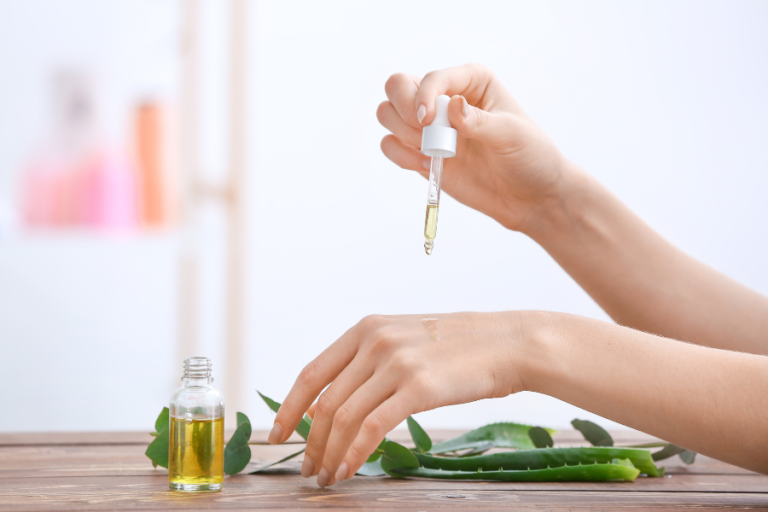Can Houseplants Remove Toxins From Your Home?
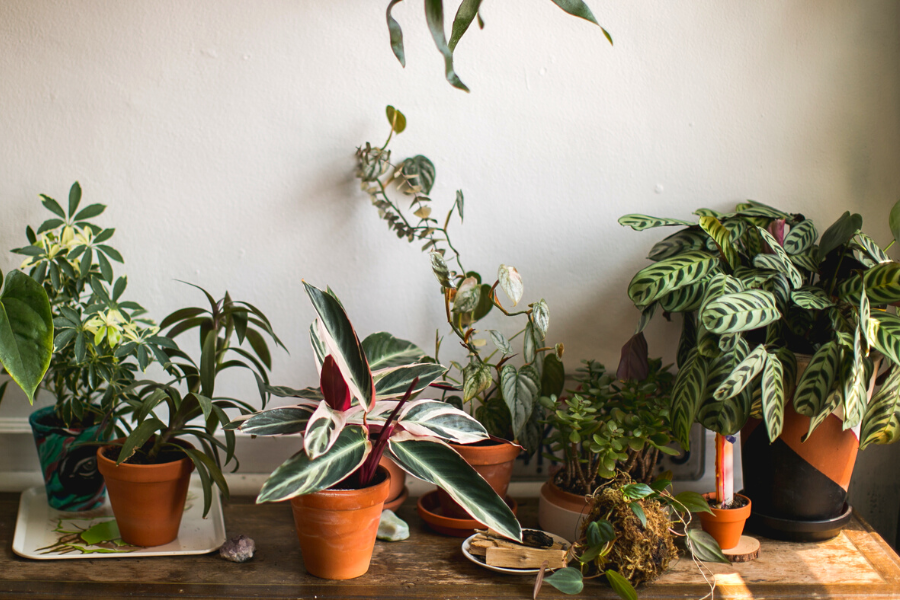
There is no denying the fact that plants are aesthetically pleasing and can make a home feel cozier. But did you know that some houseplants can also help improve the air quality of your living space by removing harmful chemicals?
Certain indoor plants take in carbon dioxide and produce new oxygen into your home while also removing harmful toxins found in everyday items, making them one of the most affordable natural air-filtering systems. Not sure which type of plant is for you? Below, we have listed our top six air-purifying houseplants and how to maintain them.
Disclaimer: This article includes affiliate links. If you click one of them, we may receive a small percentage of the sale at no extra cost to you. Thank you for your support!
Palm Trees
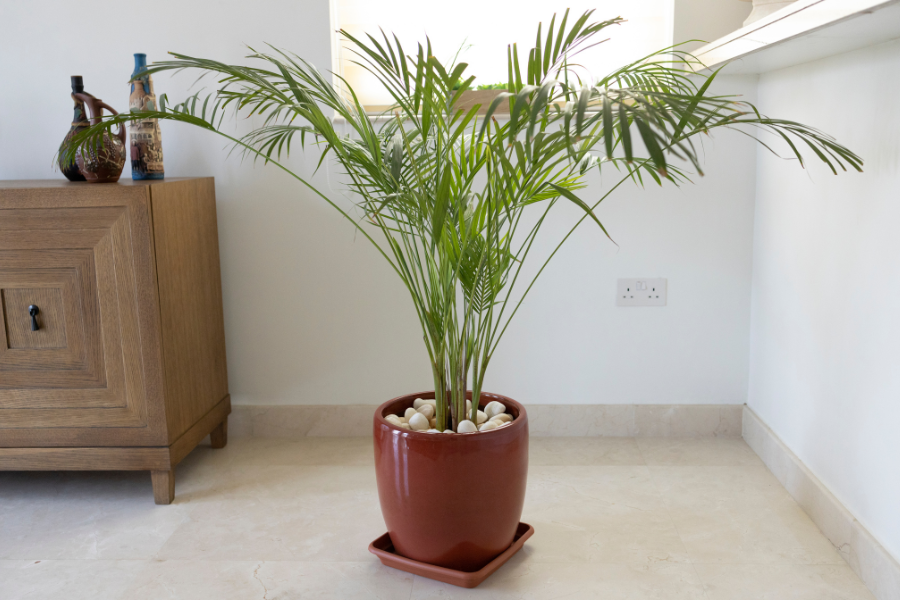
There are a few types of palms that aid with air quality. The three most popular are the Lady Palm (Rhapis Excelsa), Areca Palm (Chrysalidocarpus Lutescens), and Bamboo Palm (Chamaedorea Seifrizii). These plants will not only remind you of a tropical vacation when you look at them, but they are relatively easy to take care of and will last for years if maintained properly. We recommend the Areca Palm plant as it will filter out the most toxins, including benzene, xylene, ammonia, formaldehyde, and trichloroethylene.
Palm Tree Care
Palm plants should be watered regularly (around 2 to 3 times a week) and, if adequately cared for, can reach 10 to 12 feet in height. When selecting a palm tree plant, look for ones with a larger trunk at the base, as thin base plants tend to topple over and are more challenging to maintain.
Palm plants do not require a ton of direct sunlight, so you can leave them in a room that gets indirect natural light (e.g., living room or common room). However, they should be placed in an area that has at least one window.
The ideal temperature is between 15 and 21 degrees Celcius. If the temperature is too cold, palm tree leaves will begin to turn yellow or brown. In addition, placing it too close to drafty windows or heaters in the winter seasons can always cause your plants to wilt.
Caution
In environments that are too dry, you may get spider mites. These are the most common pests for palm plants. If you do get spider mites, it is important to begin treatment immediately. You will notice them around the trunk of the plant and in the soil.
While many palm trees are toxic to household pets, the Areca palm is considered safe if consumed by both cats and dogs by the American Society for the Prevention of Cruelty to Animals (ASPCA). If ingested, pets may experience some adverse side effects, such as temporary mild vomiting and diarrhea. However, if you notice your pet exhibiting severe side effects that are prolonged or become quite ill, contact your local veterinarian as soon as possible.
Boston Fern (Nephrolepis Exaltata “Bostoniensis”)
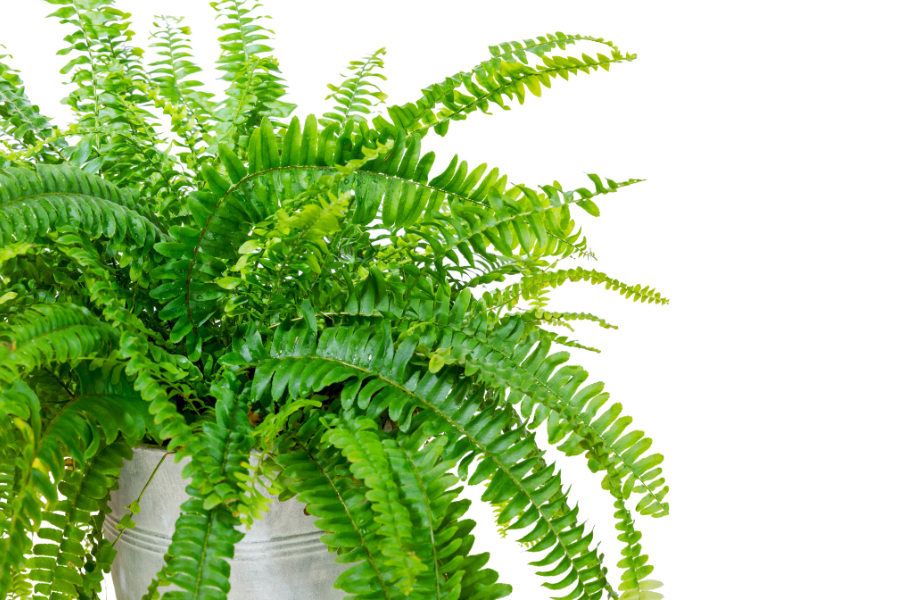
The Boston fern is one of the best additions to any home. They help to remove formaldehyde, xylene, and toluene. If you or someone in your household smokes, Boston ferns can also help filter toxins released into the air from cigarette smoke. The Boston Fern is a perfect addition to any home seeking natural air purification or for those who want to spruce up their home!
Boston Fern Care
As for maintenance, the soil should be moist but avoid overwatering. They can be planted in regular pots or hanging pots as long as there is proper drainage from the bottom to prevent the roots from moulding. The bathroom is an excellent location for this plant, as it does not need direct sunlight and can survive with filtered natural light.
In general, ferns prefer high-humidity environments. However, the Boston fern can tolerate lower humidity levels as long as the air is not completely dry. The ideal temperature is between 18 and 25 degrees Celcius.
Caution
These plants are highly prone to spider mites and whitefly. Inspect new plants before bringing them home. If you notice your plant has some of these unwanted critters, you can control the issue by misting soapy water onto your plant or sprinkling diatomaceous earth (DE).
Rubber Plant (Ficus Robusta)
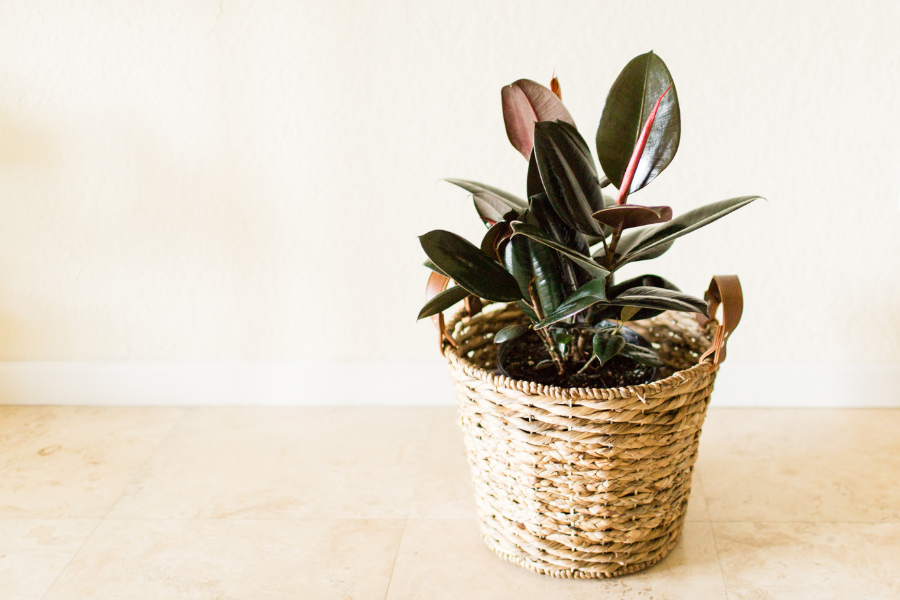
If you have a dim office or low-light room in your home that needs some life, try opting for a rubber plant (or a Dracaena listed below). These plants help to remove mould spores and bacteria from the air. They should not be placed near direct sunlight as they require minimum light. Also, avoid placing them near drafty windows, air conditioners or heaters.
Rubber Plant Care
Summer to fall is the growing season, and Rubber plants should be watered thoroughly. The soil should feel moist. These plants should also be fed a diluted liquid fertilizer during this season. In the winter months, Rubber plants require less care and attention. They should only be watered once to twice a month. Rubber plants can grow up to eight feet with a spread of up to five feet.
If the leaves begin to turn yellow/brown or begin to droop, then the plant is being overwatered. If you notice that the leaves are starting to curl, then the environment is too dry. If this happens, lightly mist your plant leaves to help bring back moisture.
Dracaena (Dracaena Deremensis)

Similar to the Rubber plant, Dracaena is a popular plant for office spaces and dim-light rooms. However, they are even easier to maintain than Rubber plants. These plants thrive from neglect and low-light environments and need very little water. They help to remove formaldehyde, xylene and trichloroethylene.
Dracaena Care
Dracaena are slightly picky when it comes to their living conditions. Too much sun or direct sunlight can cause the leaves to burn. They do best in filtered light or low-natural light. The lower the light source, the less watering this plant needs. It should only be watered around 1-2 times a month or when the soil is around 50% dry. If you are underwatering, the leaves will begin to brown (which can be trimmed off).
The ideal temperature is between 12 to 21 degrees Celcius. Anything lower than 12 degrees Celcius and a dracaena plant will die.
Only water a Janet Craig plant when the soil is around 50% dryThe ideal temperature is between 12 to 21 degrees Celcius. Anything lower than 12 degrees Celcius and the Janet Craig plant will die. If you are underwatering, the leaves will begin to brown (which can be trimmed off).
Caution
Dracaena are particularly susceptible to bugs such as mites and scale insects when the air is too dry. If there is no humidity, we recommend checking for insects and beginning treatment as soon as you see them. Treatment can be done by using soapy water or DE.
Peace Lily (Spathiphyllum “Mauna Loa”)

Peace Lilies are quite easy to grow, which is likely why they are a popular houseplant. These beautiful plants filter out benzene, xylene, ammonia, formaldehyde, and trichloroethylene from the air. Not only will this tropical plant look beautiful when it blossoms, but it will also purify and absorb humidity from the air at a faster rate than most other plants.
Peace Lily Care
Peace Lilies require medium sunlight and consistent moisture. They should be watered around 1 to 2 days a week and spritz with water often during the summer. Peace lilies may produce white flowers in warmer months with enough light and proper watering.
Peace lilies can grow without soil. If you choose only to grow them in water, then they should be suspended above the water line with an insert or a small layer of stones. This will allow the roots to grow without the base of the plant being submerged in water.
Caution
Protecting Peace Lilies from drastic temperature changes and cold drafts is important. The ideal temperature is between 18 and 26 degrees Celcius. Peace Lillies are poisonous if consumed and should stay out of reach of children and pets.
Snake Plant (Dracaena Trifasciata)

Snake plants are low-maintenance plants that help remove formaldehyde, benzene, dust, dander and other allergens from the air. In addition, they release clean oxygen into the air at night. They are great houseplants for the bedroom as they create better airflow during the evenings, leading to a better night’s sleep.
Snake Plant Care
Snake plants are among the few that can thrive in low and full-light environments. They should be watered when the first inch of soil is dry to the touch. Snake plants can go two to three weeks between watering. In the winter months, watering amounts should be reduced.


